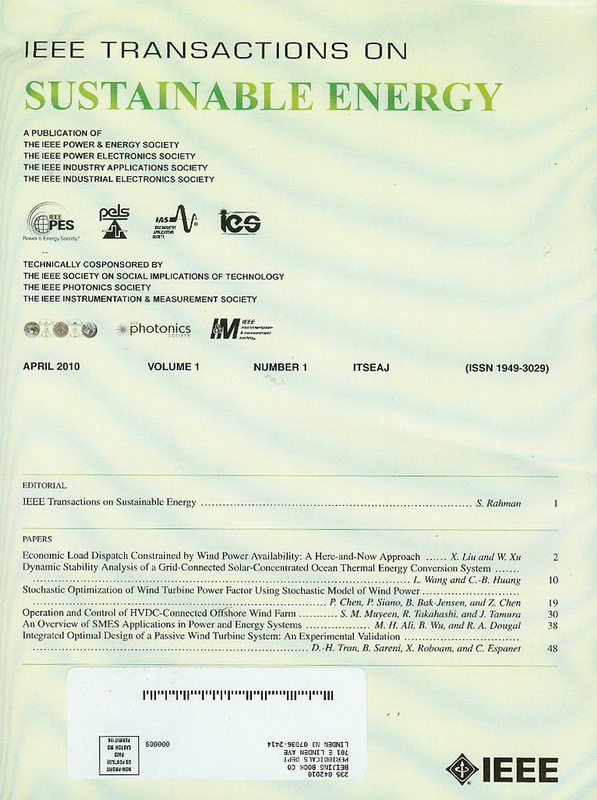A Self-Supervised Pre-Learning Method for Low Wind Power Forecasting
IF 10
1区 工程技术
Q1 ENERGY & FUELS
引用次数: 0
Abstract
As wind power is becoming a major energy source of power systems, the risk of power shortages due to its intermittent low power output is growing. Accurate forecasting of low wind power is crucial for mitigating these impacts. However, conventional methods struggle with few-sample issues due to the infrequent occurrence of low wind power, limiting accuracy improvements. To address this, a self-supervised pre-learning method is proposed to forecast low wind power occurrence period and output, leveraging the similarities and differences among low output samples to enhance forecasting accuracy. Low wind power output is decomposed into low wind power events (LWPE), which represent the occurrence timeframe, and low wind power processes (LWPP), which represent the power sequences. For LWPE forecasting, a siamese residual shrinkage network based on contrastive learning is introduced. This network pre-learns LWPE features from sample pairs to mitigate the impact of imbalanced sample distribution. For LWPP forecasting, a pattern recognition-based embedded forecasting framework is proposed, embedding typical LWPP fluctuations into the prediction network to improve fit under limited sample conditions. A case study on 3 wind farm clusters shows that this method improves LWPP forecasting accuracy from 84.99%-86.6% to 89.97%, outperforming traditional methods without pre-learning.低风量预测的自监督预学习方法
随着风力发电逐渐成为电力系统的主要能源,其间歇性低功率输出导致的电力短缺风险日益增加。准确预测低风力发电对减轻这些影响至关重要。然而,由于低风力发电的情况很少发生,传统的方法难以解决样本少的问题,限制了准确性的提高。针对这一问题,提出了一种自监督预学习方法,利用低输出样本之间的异同来预测低风电的发生周期和输出,提高预测精度。将低风量输出分解为低风量事件(LWPE)和低风量过程(LWPP),前者表示低风量事件的发生时间框架,后者表示低风量过程的功率序列。在LWPE预测中,引入了一种基于对比学习的连体残差收缩网络。该网络从样本对中预学习LWPE特征,以减轻样本分布不平衡的影响。对于LWPP预测,提出了一种基于模式识别的嵌入式预测框架,将典型的LWPP波动嵌入到预测网络中,以提高有限样本条件下的拟合。通过对3个风电场集群的实例研究表明,该方法将LWPP预测准确率从84.99% ~ 86.6%提高到89.97%,优于传统的无预学习方法。
本文章由计算机程序翻译,如有差异,请以英文原文为准。
求助全文
约1分钟内获得全文
求助全文
来源期刊

IEEE Transactions on Sustainable Energy
ENERGY & FUELS-ENGINEERING, ELECTRICAL & ELECTRONIC
CiteScore
21.40
自引率
5.70%
发文量
215
审稿时长
5 months
期刊介绍:
The IEEE Transactions on Sustainable Energy serves as a pivotal platform for sharing groundbreaking research findings on sustainable energy systems, with a focus on their seamless integration into power transmission and/or distribution grids. The journal showcases original research spanning the design, implementation, grid-integration, and control of sustainable energy technologies and systems. Additionally, the Transactions warmly welcomes manuscripts addressing the design, implementation, and evaluation of power systems influenced by sustainable energy systems and devices.
 求助内容:
求助内容: 应助结果提醒方式:
应助结果提醒方式:


